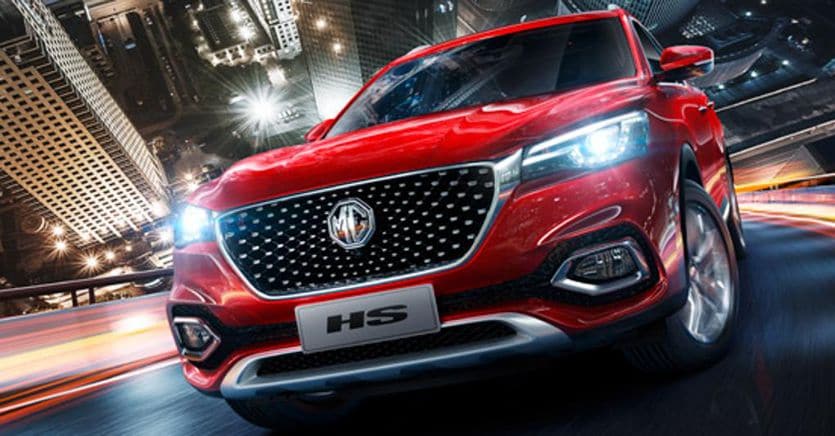Listen to the audio version of the article
Registrations of cars produced in China recorded the highest levels of growth on an annual basis in February (+45%) and also in the two-month period January-February (+43%). Cars made in China outsold those made in Italy, Korea, Morocco and Romania, also closing the gap between cars made in Turkey and the UK. The growth is even stronger if we consider registrations of electric vehicles, with cars produced in China accounting for one in five sales in the months of February and also in the two-month period January-February. In contrast, for example, registrations of electric cars produced in Germany increased by only 8% in the first two months of the year. According to data from Jato Dynamics for 28 European markets, a total of 988,116 passenger cars were registered in February. This marks a 10% increase in volume compared to February 2023, bringing the year-to-date total to nearly two million units, an increase of 11%.
44% of cars produced in China are Tesla, Volvo and Dacia
The growth according to Jato Dynamic is partly explained by actions taken by some Chinese manufacturers to speed up imports ahead of the EU’s decision on the anti-subsidy investigation. The increase in tariffs could, therefore, slow down the growth of the Chinese, but as a knock-on effect it could also push them to accelerate deliveries to Europe. While these results are impressive, it is notable that around 44% of all car volumes produced in China were recorded by Western brands including Tesla, Volvo and Dacia (particularly the Spring electric model), while 40% were represented by MG, a brand owned by the Chinese Saic, but British by history. This means that Chinese brands accounted for only 16% of car sales produced in China. According to Jato, Chinese brands still have a long way to go before occupying a significant part of the European market. Despite advances in performance and convenience, raising awareness and changing long-held perceptions will take longer.
Sales of petrol cars are growing, electric cars are stable
Battery electric vehicles are no longer driving growth as they have in recent months. In contrast, petrol cars performed almost as well as before the Covid-19 pandemic. Jato data revealed that petrol cars account for 61% of total sales in February 2024, compared to 62% recorded in February 2019. A success that comes at the expense of diesels in particular, with the market share of these vehicles increasing drop from 35% in February 2019 to just 15% last month. Which is to say that despite the notable shift towards electric vehicles, many European consumers are not yet ready to abandon internal combustion cars. Even though we are seeing a sharp decline in demand for diesel models, drivers are opting for petrol alternatives or hybrids rather than going electric. It should be noted that as an alternative to electric vehicles, the Full Hybrid type is increasingly becoming the one most capable of guaranteeing reduced consumption, but also better electric mileage.
Tesla dominates the electric market MG gains ground
Year-on-year EV market share remained unchanged in February, at 13.2% Tesla continued to dominate the EV market, with the Model Y and Model 3. MG, on the other hand, is gaining ground . SAIC, the parent company of MG and Maxus, continued to climb the charts in February thanks to the popularity of combustion models: in the second month of the year it secured the largest increase in market share of any manufacturer. Despite the notable performance of the electric models – suffice it to say that the MG 4 was the fourth most registered electric car in February – the petrol models were the manufacturer’s main growth driver. As a result, during the month, MG, thanks to models such as the MG HS, registered more new cars than Cupra, Mazda or Jeep. Other leading brands in February were Suzuki, BMW, Mitsubishi and Toyota. In contrast, Volkswagen, Ford, Renault, Mercedes and Hyundai-Kia recorded the largest market share losses
The Dacia Sandero was the best-selling car in February
The Dacia Sandero confirms itself as the most registered car in Europe for the second consecutive month, with 20,800 units sold, an increase of 13% compared to February 2023. The Tesla Model Y, which was the most registered car in Europe, remains behind last year, while strong demand in key markets saw the Volkswagen Golf take third place. Registrations of Citroen’s C3 increased by 61% compared to February 2023, thanks to competitive offers and prices introduced with the arrival of the new generation. Skoda Octavia, Toyota Corolla, Audi A3, BMW X1, Seat/Cupra Leon, Tesla Model 3, MG Zs and Opel/Vauxhall Astra also recorded an increase in registrations. Among the latest additions, Jeep has registered 5,677 units of the Avenger, of which 1,434 are electric. Volvo sold 3,663 units of the EX30 and Renault sold 1,722 units of the Espace. Mitsubishi recorded sales of 1,535 and 1,339 units of the Colt and ASX, while Honda recorded 1,100 units of the ZR-V.
